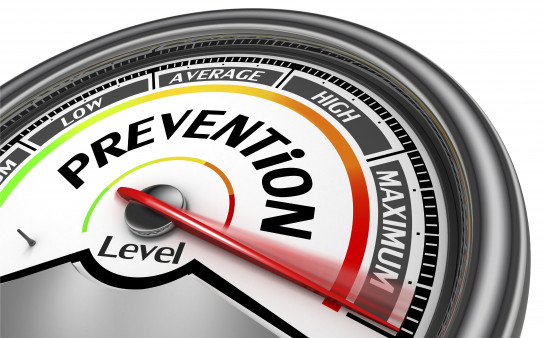The federal agency tasked with protecting and promoting our country’s health wants you to know that U=U is 100% effective at preventing HIV transmission and that PrEP reduces the risk of acquiring the virus by 99% in men who have sex with men (MSM).
That’s according to updated data from the Centers for Disease Control and Prevention (CDC) on its website. Specifically, the numbers are found on a page titled “Effectiveness of Prevention Strategies to Reduce the Risk of Acquiring or Transmitting HIV,” which was updated July 18. The page also includes risk data on male condoms and male circumcision.
U=U, or undetectable equals untransmittable, refers to the fact that people living with HIV who take meds and maintain an undetectable viral load cannot transmit the virus sexually.
Prevention Access Campaign (PAC) launched U=U as a marketing campaign and movement in July 2016 in order to fight stigma, encourage engagement in care and get the word out about data that prove U=U. Three years ago, such data were relatively new and not well publicized or accepted as true.
How does the PAC team view the CDC update? “We’re very happy with ‘100% effective,’” Murray Penner, PAC’s executive director of North America, told POZ. “People around the world look to the CDC for accurate assessments about HIV transmission risk. It’s important that the CDC’s messaging be clear, easy to understand and accurate. You can’t get better than 100% effective.”
PrEP, meanwhile, refers to pre-exposure prophylaxis, a way for HIV-negative people to lower their risk of acquiring the virus. To date, only one form of med has been approved as PrEP: the daily tablet Truvada. Other forms of PrEP are on the horizon.
The following passage from the CDC site regarding U=U applies to both heterosexual men and women and to MSM:
For persons who achieve and maintain viral suppression, there is effectively no risk of transmitting HIV to their HIV-negative sexual partner. This translates to an effectiveness estimate of 100% for taking ART [antiretroviral therapy] regularly as prescribed and achieving and maintaining viral suppression. Effectiveness is lower, and there is a risk of transmitting HIV, when persons do not take ART as prescribed or stop taking ART, if viral suppression is not achieved, or if viral suppression is not maintained.
Regarding PrEP and MSM, the CDC writes:
When taking PrEP daily or consistently (at least 4 times per week), the risk of acquiring HIV is reduced by about 99% among MSM. While daily use is recommended in the U.S., taking PrEP consistently (at least 4 times per week) appears to provide similar levels of protection among MSM. The effectiveness of oral PrEP is highly dependent on PrEP adherence. When taking oral PrEP daily or consistently, HIV acquisition is extremely rare and has not been observed in any of the studies described below. In clinical practice, a few cases of new HIV infections have been confirmed while HIV-negative individuals were on PrEP with verified adherence.
Regarding PrEP and heterosexual men and women, the CDC writes:
There is evidence for the effectiveness of PrEP when used recently [based on detecting any amount of TDF (tenofovir disoproxil fumarate) one of the drugs in Truvada, in plasma], which is estimated to be 88–90%. There is no effectiveness estimate of PrEP when taken daily or consistently among heterosexuals; however, it is likely to be greater than the estimates corresponding to recent use and similar to what has been observed for MSM. The effectiveness of oral daily PrEP is highly dependent on PrEP adherence, with maximum effectiveness when taking PrEP daily and lower effectiveness when not taken consistently.
Regarding PrEP and people who inject drugs (PWID), the CDC writes:
PWID face HIV risks from both injecting and sex behaviors. Studies on the effectiveness of PrEP when taken daily among PWID are limited. However, when taking PrEP consistently, the risk of acquiring HIV is reduced by an estimated 74–84% among PWID. These estimates are based on tenofovir alone and among a subset of PWID taking PrEP consistently, as verified by directly observed therapy or daily diary plus monthly pill count. The effectiveness of two-drug oral therapy has not been assessed among PWID but may be higher. The effectiveness of oral daily PrEP is highly dependent on PrEP adherence, with maximum effectiveness when taking PrEP daily and lower effectiveness when missing doses.
To learn what other steps Penner would like the CDC to take, read “What a U=U Leader Thinks About the CDC’s Updated Data on HIV Risk.” And to learn about a new form of PrEP being researched, check out “Long-Lasting Islatravir PrEP Implant Could Protect Against HIV for a Year.”







1 Comment
1 Comment